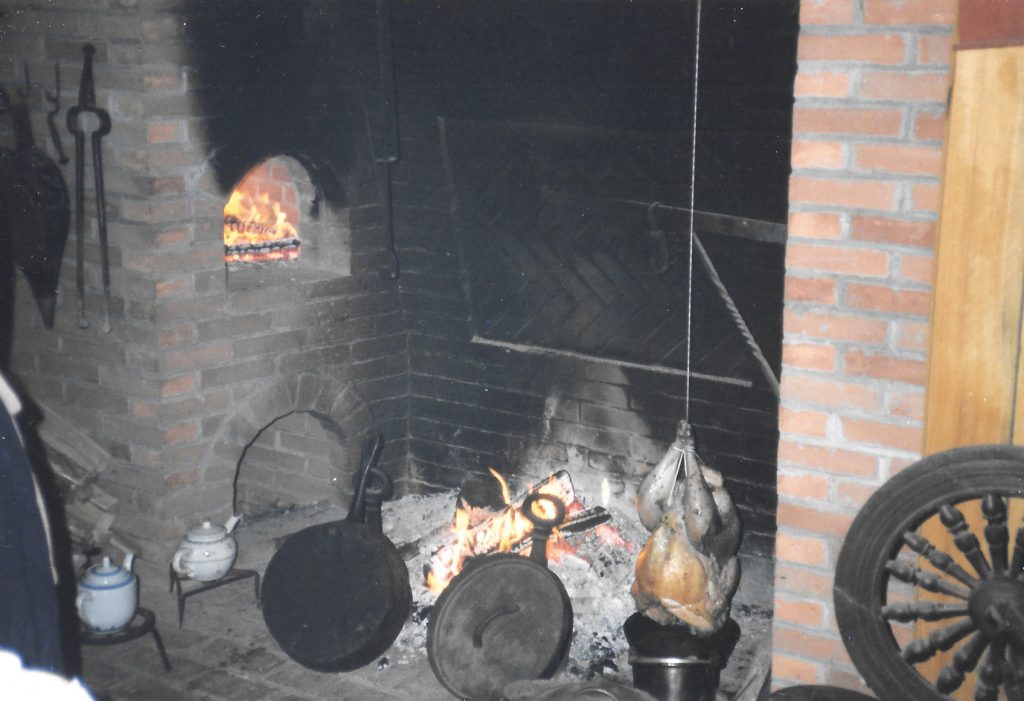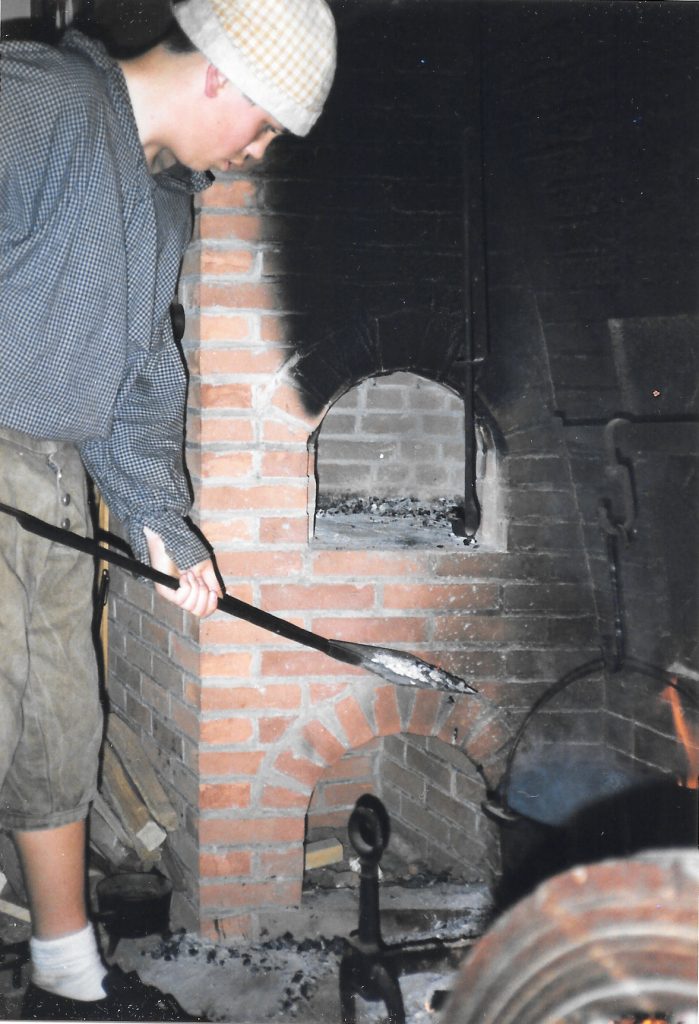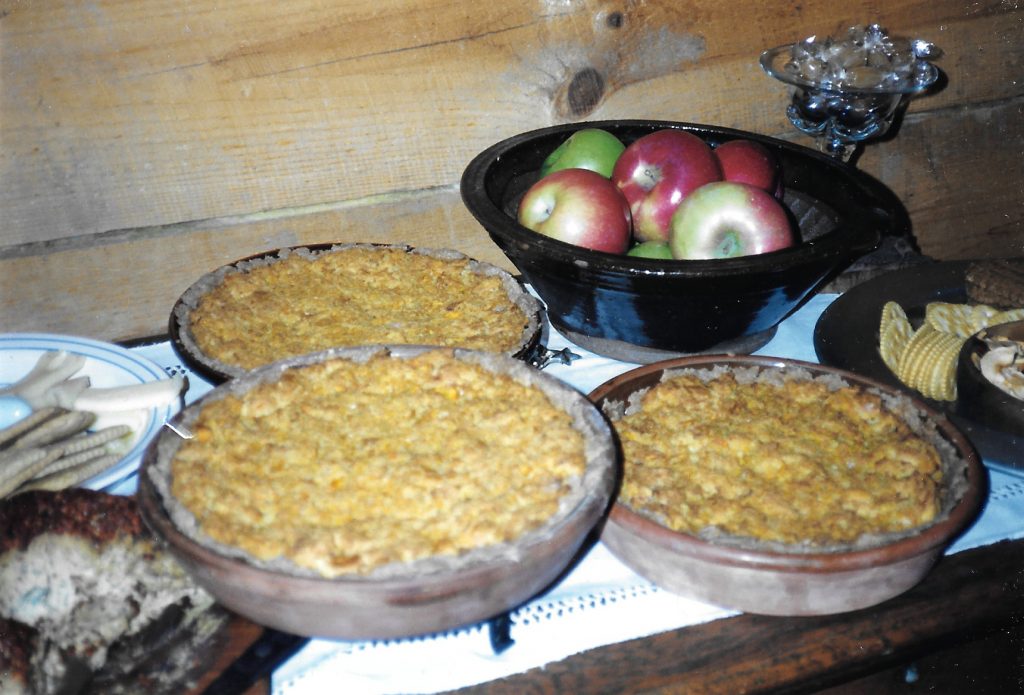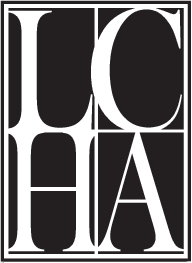Baking in a Brick Oven
A previous article discussed the placement of the oven in Colonial fireplaces. Among a cook’s skills was knowing how to judge the temperature of the oven and to use it to best advantage. To heat up a brick oven, a fire is built inside it.

On the floor of the oven small kindling was arranged and the fire started by adding hot embers from the hearth fire. Once the kindling was burning well, wood was added, keeping the fire burning hot and filling cavity of the oven one-third to about half full.
Depending on the oven, which the cook would learn from experience, the fire would be tended for 2 ½ to 3 hours. The last half hour the hot coals would be spread around the entire oven floor using a metal peel. Given the time necessary, the hot embers were removed from the oven with the peel.

Once the embers had been removed, the floor of the oven would be washed with a wet broom. This step had three purposes: one, was to remove any small embers that might be lingering especially between the bricks. A fair amount of cooking in the brick oven was done in pottery, if a “cold” pottery pie plate or dish was placed upon a hot coal, the dish could crack. Second, washing the floor also removed most of the ash left behind from cleaning out the oven. It was common for cooks to bake their bread directly on the floor of the oven without the use of a bread pan of any type. The third advantage of washing the floor of the oven was that it added moisture to the oven. The oven, now clean, was ready to be tested.
Three ways of judging the heat of an oven have been described. One was to observe the color of the brick in the oven’s interior. It was said that if the bricks “look grey” the oven is ready. The second approach was to throw flour on the floor of the oven and see how quickly it would turn brown or burned. The third method was to have the cook put their hand, beyond the wrist, into the oven cavity (not touching anything, of course) and count. (This last method is my personal choice.)
If one could count to 10 or 11 it was about 450 degrees and ready for a pie. When the pies(s) came out the oven would be ready from bread; after the bread, those recipes requiring a moderate to “slow oven,” as it was referred to. With only warm heat left in the oven, it was suitable for drying prepared fruits for winter storage.

One of the advantages of the brick oven was that it was self-cleaning. Every time a fired was built inside the oven, it would burn off whatever spilled during a previous use. No scrubbing required.
Louise Miller, LCHA Education Director

 Newsletter
Newsletter Join LCHA
Join LCHA Donate Now
Donate Now